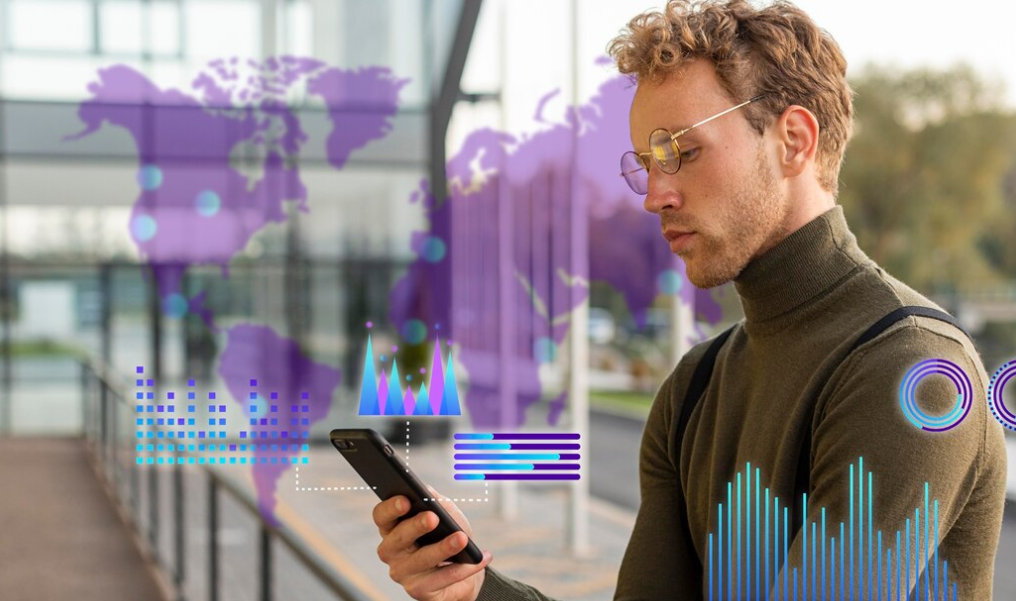Wearable technology has become a familiar part of everyday life. From smartwatches tracking steps to rings monitoring sleep, the focus has long been on fitness. But the future of wearable tech in healthcare goes far beyond counting calories and measuring heart rates — it’s about transforming how we diagnose, treat, and manage health on a global scale.
From Wellness to Medical-Grade Monitoring
Early wearable devices primarily served lifestyle functions: counting steps, measuring workouts, or tracking sleep cycles. However, recent advancements are pushing these devices into clinical territory.
Wearables are now capable of continuously monitoring vital signs, detecting irregularities, and even predicting medical conditions — all in real time. This shift is not just technological; it’s philosophical. Healthcare is moving from reactive to proactive, from hospital-based to patient-centered and data-driven.
Key Areas Where Wearables Are Redefining Healthcare
1. Chronic Disease Management
Wearables are enabling patients with conditions like diabetes, heart disease, and hypertension to track their health more effectively. For example:
- Continuous glucose monitors (CGMs) help diabetic patients manage blood sugar in real time.
- Smartwatches with ECG functions can detect atrial fibrillation, alerting users to potential cardiac events before they become emergencies.
These tools reduce hospital visits and allow physicians to monitor patients remotely.
2. Remote Patient Monitoring (RPM)
With the rise of telemedicine, wearables are crucial for collecting accurate health data outside clinical settings. This helps doctors make informed decisions without requiring patients to be physically present.
Especially in rural or underserved areas, wearable RPM tools bridge gaps in access to care.
3. Post-Surgical Recovery and Rehabilitation
Devices that track movement, temperature, or wound healing can assist in post-op recovery. They alert patients and doctors to complications early, improving outcomes and reducing readmission rates.
4. Mental Health and Neurological Conditions
Modern wearables can track sleep patterns, stress levels, and physical activity — all indicators of mental well-being. Some devices even monitor brain activity using EEG sensors to assist with conditions like epilepsy or depression.
This opens doors to more personalized and responsive mental health care.
5. Early Detection and Prevention
Predictive analytics powered by AI is enhancing the capability of wearables to identify health anomalies before symptoms appear. For instance:
- A drop in oxygen saturation levels might indicate early respiratory issues.
- Unusual changes in heart rate variability could be early signs of illness or stress.
Early intervention improves patient outcomes and reduces healthcare costs.
Innovations on the Horizon
The next generation of wearable tech is more discreet, powerful, and integrated. Examples include:
- Smart textiles: Clothes embedded with sensors to monitor posture, gait, or muscle fatigue.
- Implantable wearables: Devices placed under the skin for long-term monitoring.
- Bio-patches: Thin, flexible patches that analyze sweat, temperature, or biomarkers through the skin.
These innovations promise a future where healthcare is not just on your wrist, but seamlessly woven into your daily life.
Challenges to Overcome
Despite the promise, there are significant challenges:
- Privacy and data security: Health data is sensitive and must be protected from misuse.
- Regulatory approval: Medical-grade devices must meet strict standards before clinical use.
- Interoperability: Devices from different manufacturers must communicate effectively with healthcare systems.
- Cost and accessibility: Ensuring these technologies are affordable and inclusive is key.
Conclusion
The future of wearable tech in healthcare is not just about fitness — it’s about fundamentally changing how we experience health and medicine. By empowering individuals, enabling remote care, and providing continuous insights, wearables are becoming vital tools in creating a smarter, more responsive, and more equitable healthcare system.
As technology advances, the line between healthcare and everyday life will continue to blur — for the better.


